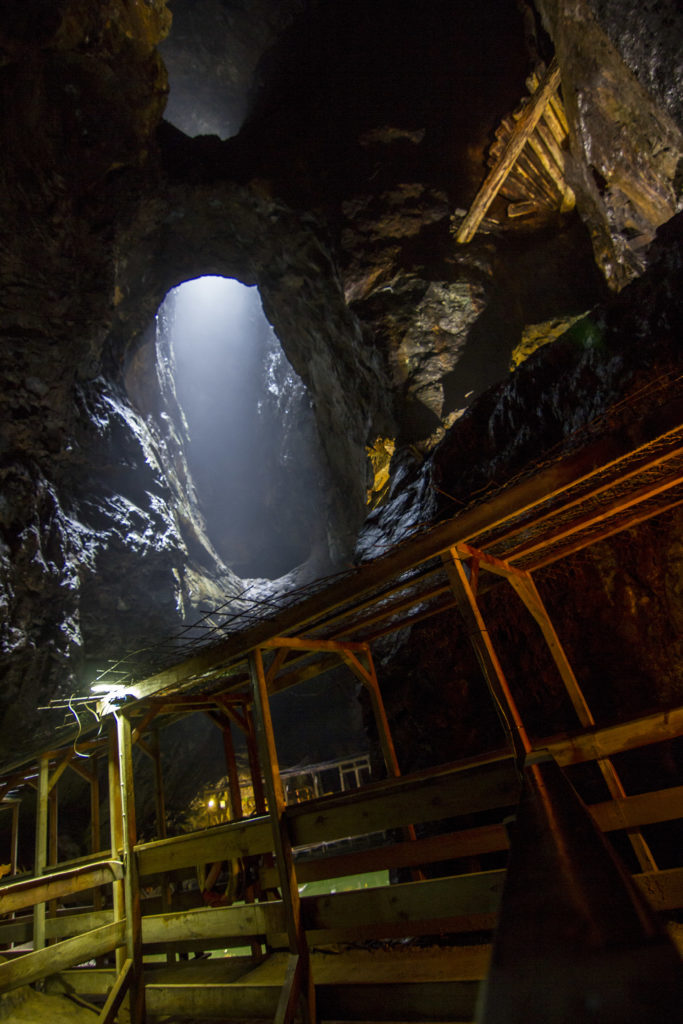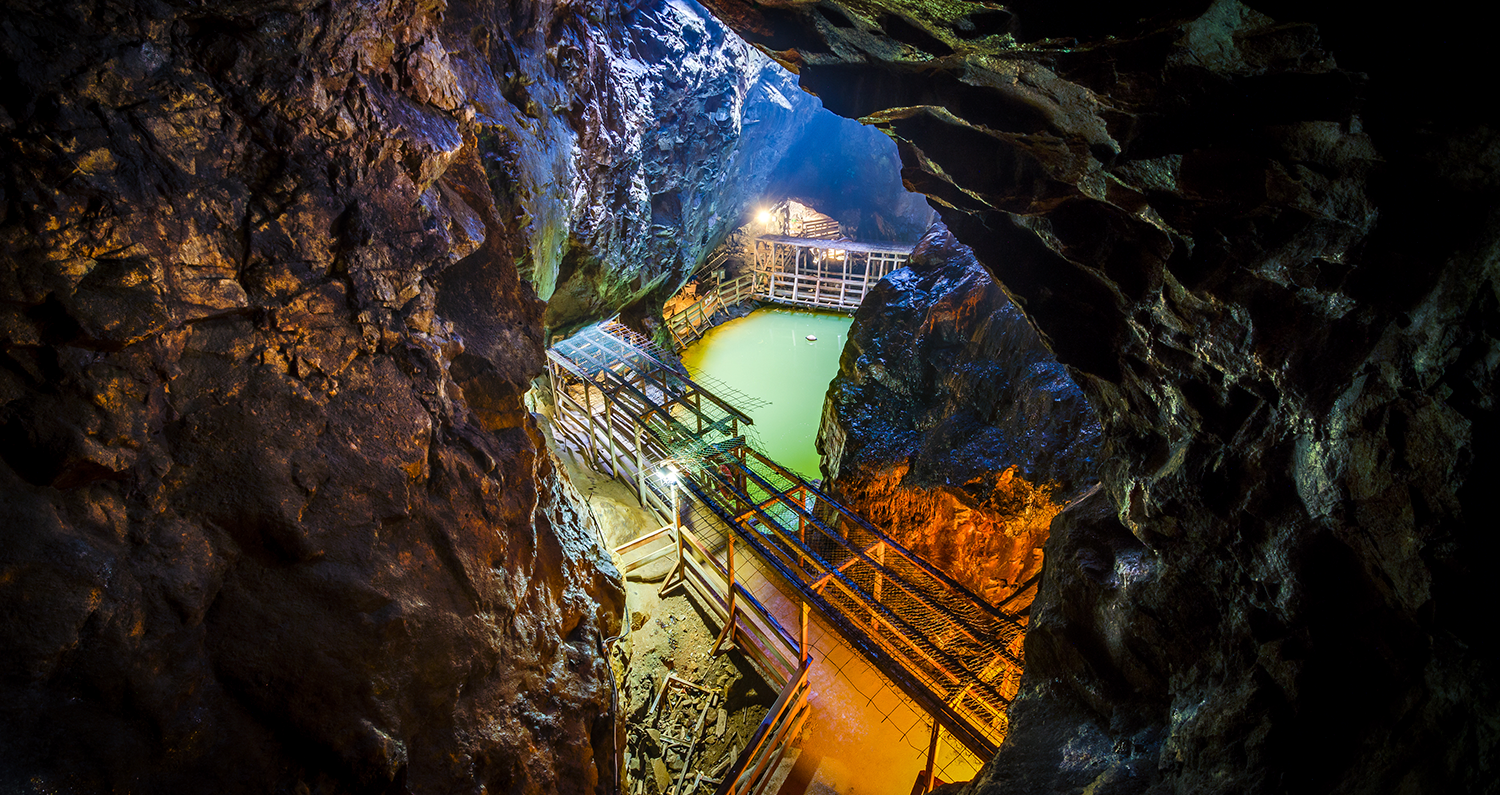It all began in 1691 …
… when a poor bell ringer from the town of Skede went for a walk on Kleva mountain and stumbled across a rock containing some fragments that glittered like gold. The rock was analysed. Sure enough, the rock did contain a tiny amount of gold, but not enough to warrant a mining operation. However the rock also contained copper and the state decided that it could be worth mining the ore and extracting the copper.
A few years later, miners began digging their way into the top of the mountain (today’s Big Pit) and Kleva Gruva was born. The mine changed hands and the new owners weren’t so sure whether the site was really worth pursuing. The miners’ work was repeatedly interrupted, then the pit filled up with water and had to be emptied again before they could continue mining.
In 1838 a rock sample revealed that the ore contained more nickel than copper. So in 1845 the mine’s ‘nickel period’ began. The largest amount was extracted in the years 1876/77. At around this time, however, significantly larger and higher quality nickel deposits were discovered in New Caledonia, which caused a dramatic fall in the price of nickel. Nevertheless, production continued (with interruptions) until 1920, when the mine finally closed down.
During the Second World War, ore that had already been mined was taken from the excavated material and smelted again to extract nickel for the war effort.
Kleva Gruva exhibition mine
In 1991 the municipality of Vetlanda opened Kleva Gruva as an exhibition mine after extensive safety measures had been carried out. Efforts were made to keep the conditions inside the mine as authentic as possible. The mine has been privately operated as a tourist attraction since 1995.
The Berggren family developed the site, adding picnic and barbecue areas. In May 2009 Henryk Hörner together with his partner took over the historical mine. They have continued to develop the site and its natural surrounds as an authentic tourist attraction.
Every year from May to August, thousands of people from Sweden and many other countries visit Kleva Gruva and, in addition to visiting the mine, take advantage of a range of activities including gold panning, completing a scavenger hunt or the obstacle course, barbecuing and walking through the surrounding forest.
By the way, the Kleva Gruva is not only a tourist attraction, but also a habitat for a large number of bats that roost in the mine during winter. That is why the mine is listed as a protected natural area and is closed between October and April each year.
Location
Kleva Gruva is situated about 10 km from Vetlanda in the middle of a forest on Kleva mountain, surrounded by the beautiful Småland countryside. Småland is renowned for its rolling hills, forests, juniper trees, lakes and traditional Swedish wooden houses.
There is a lake not far from the mine with a special area where visitors can go swimming. About an hour’s drive away is the popular little town of Vimmerby, where the famous writer Astrid Lindgren spent her childhood. In Vimmerby you can visit Astrid Lindgren’s childhood home and a theme park called Astrid Lindgren’s World, which is a popular tourist attraction for families.



